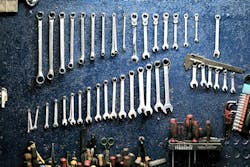Coronavirus, social distancing, and “during these uncertain times” keep looming in our vocabulary for 2020. The words are associated with a negative condition.
COVID-19 has dragged on the world’s health, economy, and society’s overall mental wellbeing. And while small businesses have been hit hard, even causing most to lay off workers or shut down completely, people are still able to find bright spots in light of current events.
Three-quarters of respondents in a survey from the Institute for Corporate Productivity said that they believed their organization’s culture has been affected in a positive way by the pandemic, which could be associated with the acceptance of telework pushing workers out of offices and a focus on employee wellbeing. Like many businesses, quick lube operators have had to innovate its processes, like adapting its cleaning procedures or even changing up its business model.
With 64 percent of operators in the NOLN COVID-19 Survey saying they had changed some of their shop processes to accommodate customers during this time, about 92 percent of operators overall said the shop’s outlook for the rest of the year was a positive one.
Just take a look at East Albemarle Xpress Lube in Albemarle, N.C. Allen Furr, manager of the facility, said since the pandemic, the shop was able to actually add 10 percent to his customer base with the changes he made.
In fact, the best month the quick lube ever had was in June 2020. So, how did he beat the pandemic odds? Elevating the whole service experience. Here are just some of the aspects that the pandemic has made a positive impact on in his shop.
92 percent of operators said their shop’s outlook for the rest of the year was positive. - 2020 NOLN Operator Survey
Communication
According to Furr, wearing face masks hasn’t been the easiest. He says it can be hard to understand what the customer is wanting, and it makes it even more difficult without facial expressions, too.
“The challenge is making sure we are doing what the customer asks,” Furr says. “We want to keep our distance from them, but we still have to do what they want as well.”
Furr’s usual repeat business is 87 percent of his customer base, but in April and May it was at 75 percent. Because car count was staying the same or increasing, he knew that a lot of new customers were coming through the door, which means creating a relationship was important right off the bat.
How do you ensure that you’re still meeting your customers’ needs in a time without shaking hands and getting in close contact? Increase your communication skills. One aspect Furr stressed with his staff was that the level of customer service needed to be top-notch. He urged staff to show that through more communication instead of gestures.
This meant going over the customer’s receipt more thoroughly to tell them exactly what services their team performed on the vehicle, what other services were recommended, and why. And throughout the service, Furr personally tries to speak to every single customer that walks through the door, and makes sure to tell each customer, “I’m glad you’re here today, but my goal is for you to come back again.” For him, it’s about creating a more loyal customer base and keeping up with that standard of service.
With the lack of a friendly handshake, facial expressions hidden under masks, and a need for social distancing, a boost in communication was needed to fill in the gaps. If actions speak louder than words, the current situation requires words to take the lead. Without this change, Furr says the return for new customers would not have been there.
Efficiency
While most believe the pandemic has caused longer waiting times and an interruption in efficiency, it’s done just the opposite. Many business owners have changed their processes and don’t plan on going back to their old ways.
Before the pandemic was even a thought, Furr would have customers pull around the back of his shop, he’d shake the customers hand, and have them jump out of their car so the technician could drive it into the bay. This was a struggle for Furr, saying cars were disorganized and techs weren’t sure of which car was next.
Since the pandemic, the shop now requires customers to pull into the bay themselves and wait in the vehicle, which kept the workers and customers safe from touchpoints, saved extra bay time—putting them at eight minutes per vehicle versus 15 minutes—and took some of the guesswork out of ‘who’s next in line?’ This is one of his processes that Furr plans on keeping after the dust from the pandemic settles.
“It’s a change for the good,” Furr says.


